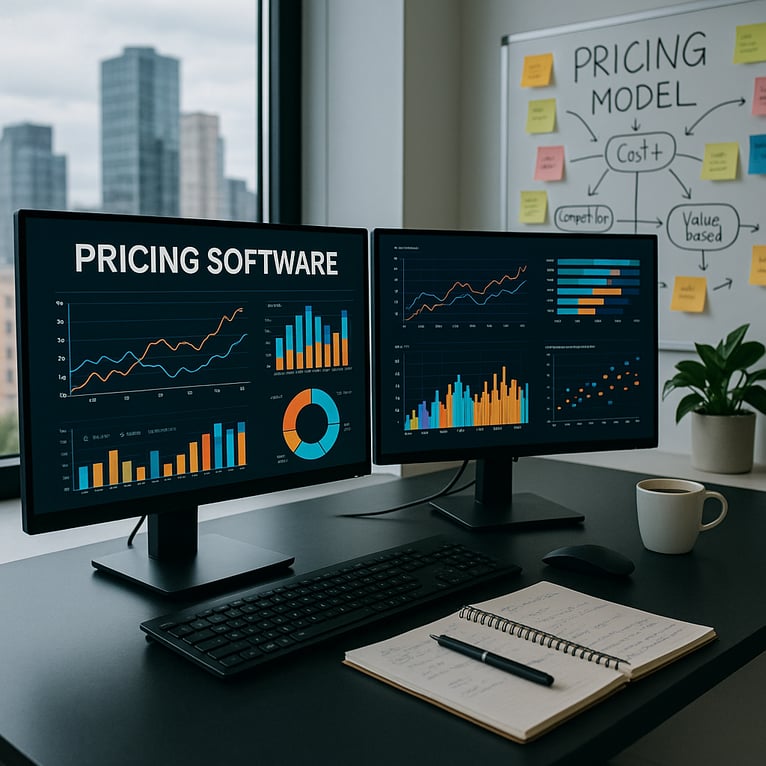In 2025, the beauty industry's trends will deviate from current predictions. While many reports forecast continued exponential growth, a more nuanced reality is emerging, with significant underlying shifts that are changing the entire category.
Industry experts are observing fundamental changes in consumer value perceptions. The European beauty market is experiencing fragmentation that challenges traditional segmentation. In addition to that, beauty trends are moving beyond overused buzzwords towards genuine accountability. Meanwhile, the beauty industry marketing is seeing diminishing returns from influencer collaborations, while digital transformation, driven by AI and AR integration, is accelerating, though with important considerations.
This analysis dives into these shifts that are reshaping the beauty industry's future. It uncovers the cautious growth trajectory, evolving consumer behaviors, geographic power shifts, marketing transformations, and technological advancements that insiders acknowledge privately but rarely discuss publicly. Understanding these concealed patterns will be crucial for companies looking to thrive rather than just survive in the 2025 beauty landscape.
The beauty market in 2025: Growth with caution
The global beauty industry enters 2025 with promising yet tempered expectations. Market projections show a massive industry poised for continued expansion, though at a more measured pace than recent years.
Global market size and projected growth
Depending on how the market is measured, the beauty industry is projected to reach between $590 billion and $677 billion by 2025. This substantial valuation encompasses the four core segments: color cosmetics, skin care, fragrance, and hair care. When including adjacent categories like esthetics injectables, men’s shaving, and spa services, the extended beauty ecosystem adds another $820 billion to the market.
Looking toward the future, most analyzes predict continued growth. The market is expected to expand at around 5% annually through 2030, with some forecasts suggesting a compound annual growth rate of 3.37% from 2025-2030. Skin care remains particularly significant, representing approximately 40% of the sector’s total market value.
In terms of regional distribution, North America and Asia Pacific together account for 70% of the beauty industry market size. The United States leads in revenue generation with projected beauty sales of $105 billion in 2025.

Source: McKinsey
Why growth is slowing compared to 2022–2024
Despite these impressive figures, a notable deceleration is occurring. The projected 5% annual growth rate represents a meaningful drop from the 7% growth rate observed during 2022-2024. This moderation stems from several interconnected factors.
First, recent growth was partially inflated by price increases during the inflationary period rather than solely volume growth. As inflation stabilizes, this pricing power diminishes. Second, market saturation in key regions limits the potential for expansion. In fact, 54% of industry executives identify uncertain consumer appetite or restricted spending as the greatest risk to the industry’s future growth.
Even traditionally resilient categories show signs of cooling. Prestige beauty in the US grew just 7% in 2023, with skincare particularly affected, rising only 2% compared to fragrance (12%) and makeup (5%). Major beauty conglomerates, including Estée Lauder, Shiseido, and Coty, reported declining sales in late 2024.
The rise of value-driven consumption
Consequently, consumers have become increasingly discerning about their purchases. After years of inflation and economic uncertainty, shoppers scrutinize the perceived value of every product they buy. This doesn’t necessarily mean choosing the cheapest option; rather, consumers define value through multiple dimensions:
- Performance verification: Products must deliver on promises with demonstrable results
- Price-to-benefit ratio: Consumers expect a clear justification for premium pricing
- Alignment with personal values: Particularly for younger demographics, ethical considerations factor heavily into purchasing decisions
Indeed, over 90% of Gen-Z consider a company’s impact on society as a benchmark in their decision-making process. Moreover, 75% of this demographic would choose sustainable options over big brands.
This value recalibration has benefited mass and “masstige” brands, which have gained market share as consumers find high-quality formulations and presentations at lower price points. The mass segment has increased its share by five percentage points globally over the past five years, particularly in skincare and makeup.
For brands to succeed in this cautious market, demonstrating and communicating differentiated value becomes paramount, especially as 83% of consumers surveyed feel hair care is affordable, yet only 67% say the same about fragrances.
Consumer behavior is fragmenting fast
Today’s beauty consumer defies easy categorization. The once-reliable market segmentation strategies have fractured as attitudes, values, and preferences evolve across every demographic. This fragmentation creates both challenges and opportunities for brands attempting to navigate the 2025 beauty landscape.
Talk to one of our consultants about dynamic pricing.
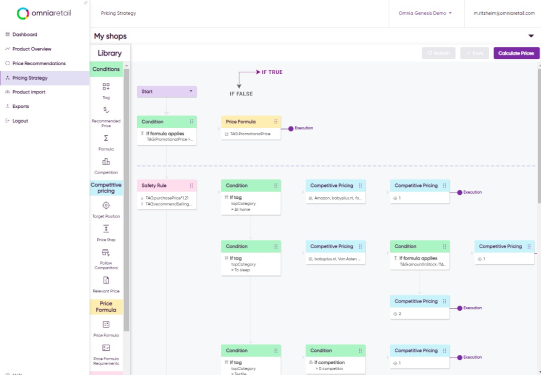
Why traditional segments no longer work
Gone are the days when age, gender, or income brackets could reliably predict purchasing behavior in the beauty industry. According to McKinsey research, the world is experiencing not just differences between countries but also significant variations between consumers in the same markets. Even within the US beauty market, no single trend dominates; instead, multiple concurrent trends appeal to different consumer groups.
This splintering effect stems from several factors. First, migration and urbanization are mixing cultural beauty norms globally. Second, growing wealth polarization is dramatically fragmenting traditional spending patterns. In the US market specifically, beauty and spending habits are diverging, exacerbated by increasing wealth gaps.
Attitude-based segmentation over demographics
Forward-thinking brands now recognize that effective consumer segmentation depends not on demographics but on attitudes. McKinsey’s research conclusively shows that consumer preferences aren’t tied to age, gender, or ethnicity. Rather, consumers’ values and beliefs, whether they prioritize organic ingredients, scientific validation, or sustainable practices, determine their beauty engagement patterns.
This attitude-based approach yields more accurate insights into purchasing motivations. For instance, 44% of consumers define beauty as “taking care of the mind and body,” revealing how beauty and wellness have become intertwined. Over half consider skincare products key contributors to their wellness routines, comparable to physical exercise.
The new meaning of ‘value’ in beauty
Value in beauty has evolved beyond mere price considerations. Nearly half of all global consumers now shop across price points, combining expensive brands with more affordable options. This hybrid shopping behavior reflects a sophisticated approach to value assessment.
The mass market has gained significant ground as consumers find elevated quality, formulation, texture, and design at lower price points. Mass and “masstige” segments have increased their share by five percentage points globally over five years, particularly in skincare and makeup.
Nevertheless, consumers still selectively splurge. Skin care items like facial serums are considered more “splurge-worthy” than cleansers or lip balms. This selective premium spending demonstrates how consumers ascribe different value to products even within the same category.

Source: McKinsey
How social media is shaping consumer behavior
Social platforms continue to fundamentally reshape how consumers discover, evaluate, and purchase beauty products. In 2023 alone, 46% of US consumers increased their beauty spending specifically due to social media influence.
Most significantly, social commerce has evolved into a global phenomenon, with 68% of purchases on these platforms driven by impulse. TikTok Shop has emerged as a particularly powerful force, generating nearly $1 billion in beauty sales and ranking as the 8th largest health & beauty retailer in the US.
Although traditional beauty marketing emphasized influencers, their effectiveness has declined noticeably. Across the US, China, and Europe, influencer relevance has dropped by eight percentage points over just two years. Instead, physical retail remains the primary source of beauty inspiration, followed by recommendations from friends and family.
The social media landscape simultaneously offers unprecedented targeting capabilities. Platforms like Facebook Ads Manager and Instagram Insights allow brands to tailor campaigns based on interests and behavior rather than traditional demographic markers. This precision targeting enhances engagement rates and return on investment for forward-thinking beauty marketers.
Geographic shifts: where growth is really happening
The geographical landscape of beauty is shifting dramatically in 2025, with growth patterns revealing surprising winners and losers across markets. Regional performance now tells a more nuanced story than global averages suggest.
Trends in the US market vs. Europe
The United States remains the dominant player in beauty, generating a projected $105 billion in revenue for 2025. This strength continues despite political volatility clouding forecasts. Notably, 51% of beauty executives plan to prioritize North American expansion, suggesting confidence in this market’s continued resilience.
Europe, meanwhile, presents a more complex picture. The region will generate approximately $150.58 billion in beauty and personal care revenue in 2025, representing a substantial but slower-growing segment of the global market. McKinsey research indicates Europe will grow “in line with global trends,” yet economic headwinds may limit volume growth.
Beauty category trends in Europe
According to Nielsen IQ’s research, European beauty e-commerce is undergoing a significant transformation. Their analysis of over 5 million European online shoppers reveals three key developments: the growing importance of beauty e-commerce across categories, the acceleration of Amazon as a beauty retailer, and the emergence of disruptive direct-to-consumer brands.

Source: NielsenIQ
TikTok Shop has made remarkable inroads, initially launching in the UK, Ireland, and Spain before expanding to France, Germany, and Italy in March 2025. This social commerce channel is reshaping how Europeans discover and purchase beauty products.
Europe’s stable but saturated market
Europe’s beauty market faces stagnation primarily because of market saturation, shifting consumer preferences toward sustainability, increased competition from niche brands, and economic uncertainties. The region is projected to grow at just 2.56% annually through 2030, substantially below global averages.
Germany holds the largest market share at 16.81%, yet even here, growth remains modest. The United Kingdom leads European growth with a projected 4.82% CAGR through 2030, bolstered by luxury skincare demand and robust e-commerce infrastructure.
India and the Middle East as rising stars
Industry executives have shifted their focus toward India and the Middle East as beauty’s most promising growth markets. Both regions are projected to grow at approximately 10% annually, significantly outpacing mature markets.
India’s luxury beauty segment alone is expected to quintuple from $800 million in 2023 to $4 billion by 2035. Major brands are responding accordingly. Estée Lauder now considers India “one of the priority emerging markets” with plans to target 60 million women initially.
Similarly, the Middle East beauty market is projected to reach $60 billion by 2025, driven by young consumers who represent the highest global spending on makeup and skincare products.
The rise of Korean beauty and skincare products

@BeautyofJoseon_Official on Instagram
Korean beauty is experiencing what industry insiders call a “second coming” after its initial boom in 2015-2016. Once characterized by complex 10-step routines and “glass skin” trends, K-beauty temporarily faced market fatigue before resurging with renewed social media virality.
South Korean cosmetics exports to European markets have skyrocketed, shipments to Belgium and Spain surged 100% and 97.6% respectively, while sales to Greece and France jumped 71.7% and 70.4%. This growth has been fueled partly by K-beauty brands’ strategic shift toward using male K-pop stars as global ambassadors.
Marketing and retail are being redefined
The landscape of beauty marketing and retail channels is undergoing a dramatic reset in 2025, with conventional wisdom being challenged across multiple fronts. Major beauty players must navigate these shifts to remain competitive.
The decline of influencer-led growth
Influencer marketing, once the cornerstone of beauty promotion, shows clear signs of diminishing returns. Instagram’s beauty-related earned media value plummeted 28% in the first quarter of 2025, dropping from $1.18 billion to $847.60 million. This decline varies by category, with haircare suffering the most severe drop at 48%, followed by skincare (36%), makeup (19%), and fragrance (12%). Overall, influencer relevance has fallen by eight percentage points across the US, China, and Europe over just two years.
Why physical retail is still powerful
Remarkably, physical retail remains the primary source for beauty inspiration, outranking social media. Half of British consumers prefer purchasing beauty products in-store, versus only 16% who primarily shop online. Even more telling, 90% of digitally-native Gen Z would rather shop for beauty products in physical locations. This preference stems from consumers’ desire to test products personally, feeling textures, smelling fragrances, and getting expert recommendations from knowledgeable staff.
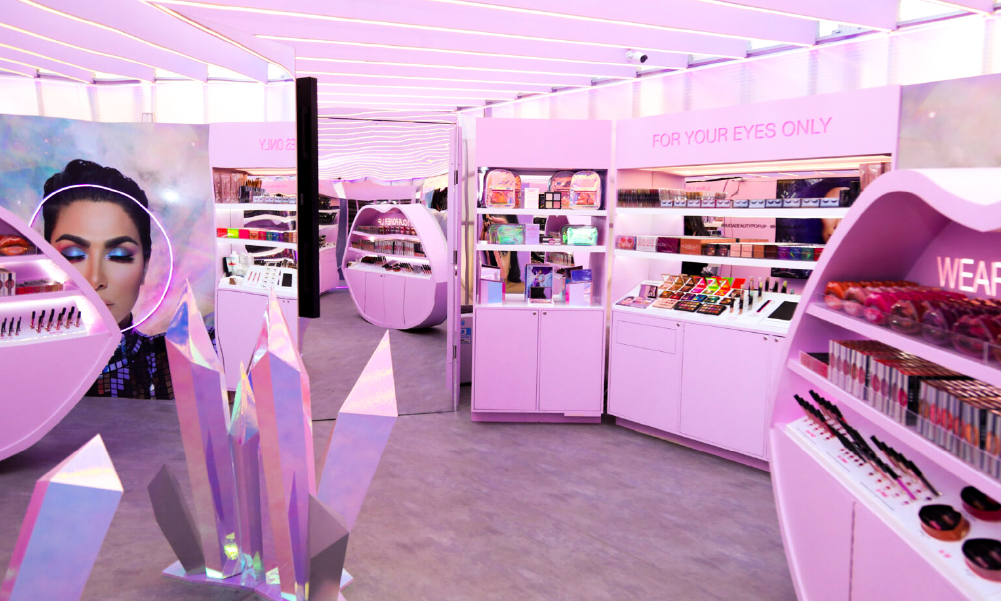
Source: Huda Beauty pop-up store
Omnichannel strategies that work in 2025
Successful beauty brands now create seamless experiences across all touchpoints. Rather than competing on discounts or shipping speed, executives focus on compelling omnichannel shopping experiences. Effective strategies integrate customer data across platforms, enabling personalized interactions and consistent messaging. The omnichannel approach ensures customers receive identical high-quality experiences whether at home or in-store. Brands that implement these integrated systems see purchase rates increase up to 287% compared to single-channel campaigns.

Image: Glossier
The role of originality in brand marketing
With digital advertising becoming less effective and more expensive, originality has become the crucial differentiator. Forward-thinking brands recognize that creative content drives algorithmic success more effectively than follower counts. Currently, only 10% of executives use AI regularly in marketing functions, yet more robust adoption could enhance profitability through research and development, quality control, and marketing personalization, provided it doesn’t erode customer trust.
Technology’s quiet revolution in beauty
Behind the flashy retail environments and social media campaigns, technology is quietly reshaping the beauty industry fundamentals in 2025. Yet unlike previous digital waves, this transformation focuses on practical applications rather than hype.
AI in product development and personalization
AI systems now analyze millions of consumer data points to develop highly targeted formulations. Brands use machine learning to identify ingredient efficacy patterns and predict future preferences based on current trends. This technology enables truly personalized products, from foundation matching algorithms that account for undertones to skincare formulations adjusted for environmental factors in specific locations.
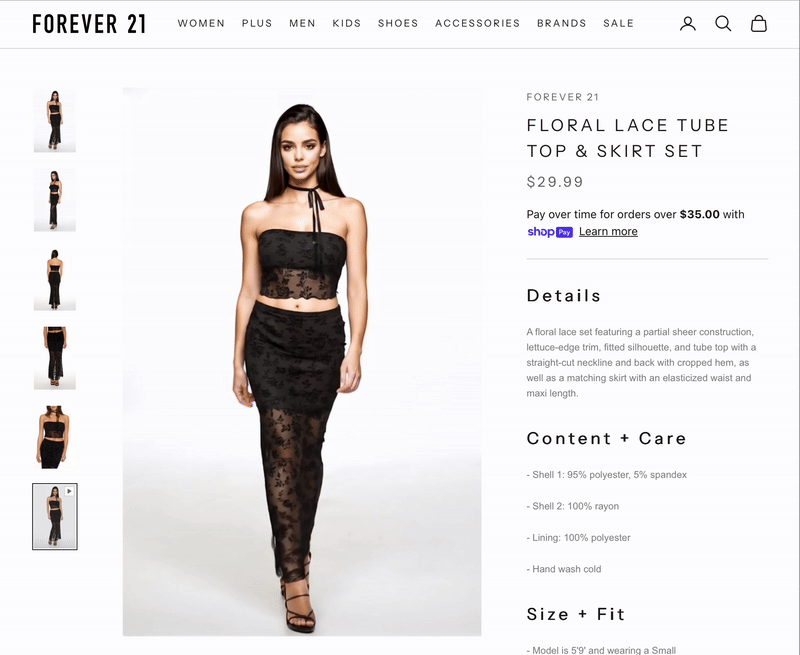
Image: Forever21 is now using AI models in its online stores
AR try-ons and virtual consultations
Virtual try-on technologies have evolved from novelty to necessity, with 71% of consumers now using these tools before purchasing. First popularized for color cosmetics, AR applications presently extend to skincare, showing projected results over time. Virtual consultations have become standard practice, offering specialized advice previously available only in high-end stores. Interestingly, these digital tools actually drive in-person visits, with customers seeking physical confirmation after virtual exploration.
Caution around AI-generated content
Alongside adoption, brands exercise restraint with AI-generated content. Consumer surveys reveal 67% of shoppers remain skeptical about AI-created marketing materials, expressing concerns regarding authenticity. Subsequently, beauty companies prioritize transparency, clearly labeling AI-generated visuals and maintaining human oversight for creative decisions. This cautious approach protects brand integrity while still harnessing efficiency benefits.
Conclusion
The beauty industry stands at a pivotal crossroads as we approach 2025. Traditional forecasts fail to capture the nuanced reality unfolding beneath surface-level metrics. Although market projections remain positive, the cautious growth trajectory signals fundamental shifts that demand strategic recalibration from industry players.
Value has clearly redefined itself through multiple dimensions - performance verification, price-to-benefit assessment, and alignment with personal values now drive purchasing decisions rather than brand loyalty alone. This value recalibration benefits mass and “masstige” brands as consumers increasingly find quality at accessible price points.
Additionally, the fragmentation of consumer behavior renders conventional demographic segmentation obsolete. Attitude-based approaches now yield far more accurate insights into purchasing motivations than age, gender, or income brackets. Brands that recognize this shift gain a significant competitive advantage through precision targeting.
Meanwhile, geographic power shifts continue to reshape market priorities. Despite Europe’s market saturation and modest growth projections, the Middle East and India emerge as standout performers with approximately 10% annual growth rates. Korean beauty products similarly experience a remarkable resurgence across European markets.
Perhaps surprisingly, physical retail maintains its dominance as the primary source of beauty inspiration. The tactile experience of testing products personally outweighs convenience factors for most consumers. Nevertheless, successful brands implement seamless omnichannel strategies that integrate customer data across platforms.
Finally, technology drives quiet but profound transformation through practical applications rather than empty hype. AI-powered product development, AR try-on capabilities, and virtual consultations enhance consumer experiences while requiring transparent implementation to maintain trust.
The beauty landscape of 2025, therefore, demands strategic agility and deep consumer understanding. Companies that recognize these hidden shifts - cautious growth, changing value perceptions, consumer fragmentation, geographic realignments, and technological integration - will undoubtedly separate themselves from competitors still clinging to outdated industry assumptions.

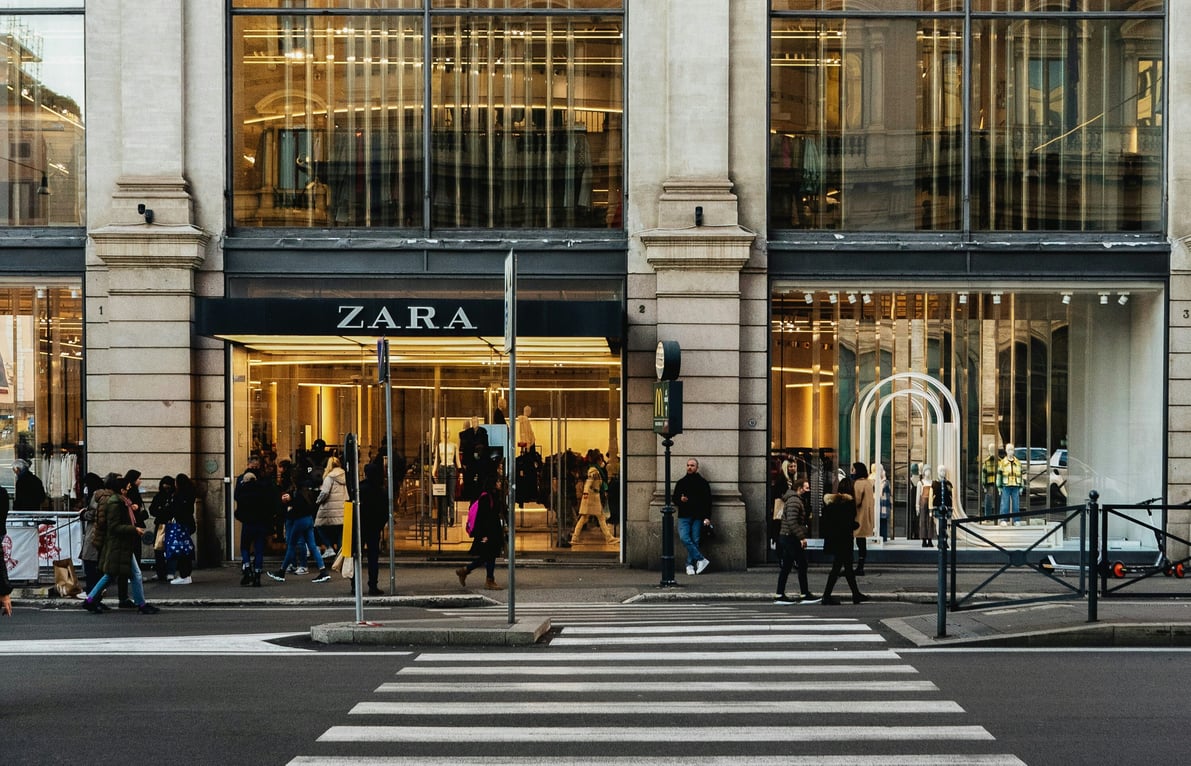

.png?height=766&name=Untitled%20design%20(21).png)
